Since the early 20th century, roads have penetrated into almost every part of Taiwan. Areas that were once pristine wilderness are now just a few hours’ drive from major cities. Access has resulted in the development of agriculture and tourism, the destruction of habitats and a massive number of wildlife deaths through roadkill.
Lin Te-en (林德恩), an associate researcher in the Endemic Species Research Institute’s (ESRI) Zoology Division, estimates that between 14 million and 20 million wild animals die on Taiwan’s roads each year as a result of collisions with vehicles.
Data gathered by the Taiwan Roadkill Observation Network (TaiRON), which Lin helped establish, indicate that nearly six in 10 roadkill victims are amphibians such as frogs. Around 21 percent are snakes and other reptiles, while the remainder is made up of birds (13 percent), mammals (8 percent) and terrestrial crabs (1 percent).
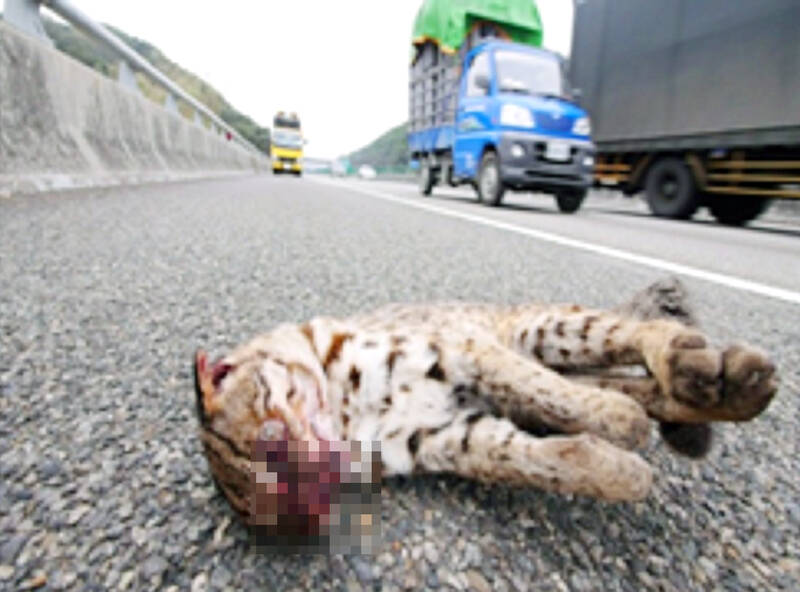
Photo courtesy of the Freeway Bureau
Since the start of 2018, TaiRON has organized surveys of sampling grids throughout the country each January, April, July and October. Some volunteers walk. Others ride bikes or motorcycles, and some drive cars.
THREATS TO WILD CREATURES
According to its Web site (roadkill.tw), TaiRON’s overarching goal is to mitigate roadkill. At the same time, it aims to “popularize national discourse on such environmental issues and civil participation in scientific research,” while encouraging people to develop a lifelong interest in ecology and conservation.
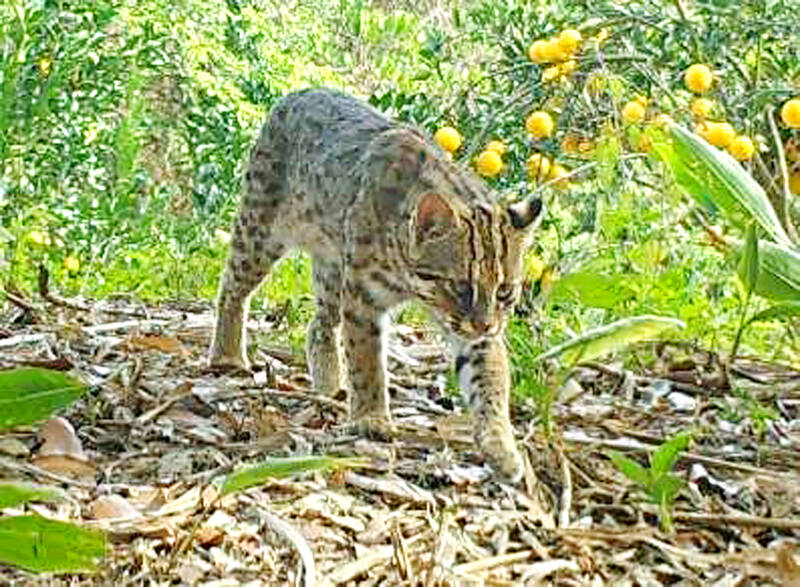
Photo courtesy of the Forest Bureau
TaiRON traces its origins to a reptile group Lin set up on Facebook in 2011 so lizard and snake fans could share photos and information about the creatures they encountered. Interest in the group surged after Lin posted an image of a road-killed snake.
Lin, a herpetologist, initially wanted to focus on the road mortality of reptiles. But realizing that cars and motorcycles are a threat to every kind of wild creature, and seeing how passionate group participants were about all forms of wildlife, he broadened the project’s scope, and called on amateur naturalists and nonprofessional observers to gather pictures and data whenever they came across roadkill.
In a recent academic paper, Lin and coauthor Hsu Chia-hsuan (許嘉軒) describe TaiRON as “the largest citizen science project in Taiwan.”
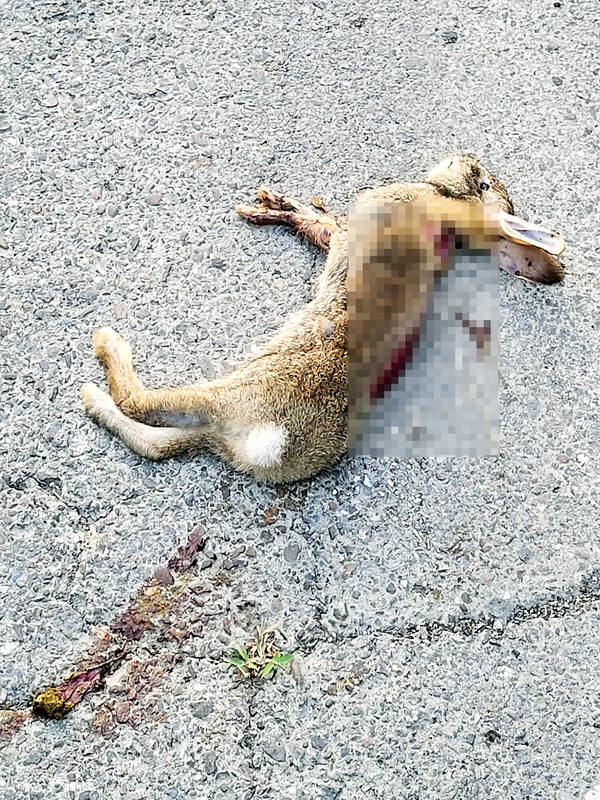
Photo courtesy of Mark Roche
As of April 7, the network’s Facebook page had 22,817 followers. Over the past decade, 6,722 individuals have contributed almost a quarter of million reports to TaiRON, Lin says.
TaiRON’s Web site points out that this data has led to “an interesting and valuable discovery.” Namely, the problem of roadkill isn’t concentrated around national parks, conservation zones, and other places that should be especially rich in wildlife. Rather, it often occurs in suburban areas, lowland forests and other locations where the issue hasn’t received much attention.
TaiRON’s findings are important because they help make up for the lack of data, the Web site explains. Many participants, it goes on to say, have been astonished to discover how many animals live near their homes. These include “endemic species and protected animals and rare species, but they just never saw them alive.”
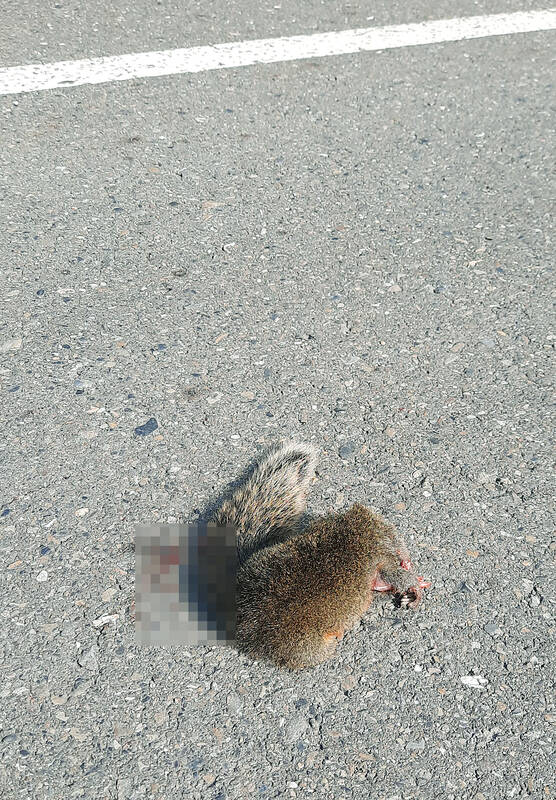
Photo: Steven Crook
Lin says that while wildlife-vehicle collisions haven’t caused any species to disappear altogether from particular locations, this could happen in a decade or so if nothing is done to curb the problem. Asked if the number of animals being killed on roads is making a real difference to the long-term survival prospects of individual species, he highlights the plight of the leopard cat (Prionailurus bengalensis chinensis) and Maki’s keelback (Hebius miyajimae), a non-venomous snake.
The leopard cat is native to a wide swath of South, Southeast, and East Asia, and placed in the “Least Concern” category by the International Union for Conservation of Nature. In Taiwan, where it’s the only surviving endemic cat species, fewer than 500 leopard cats survive in the wild, mostly in the counties of Miaoli and Nantou.
Maki’s keelback is an endemic species, meaning it exists in no other country. It inhabits wooded low-elevation mountain environments in central and northern Taiwan, and is the only snake species currently receiving the highest-level of protection under the Wildlife Conservation Act.
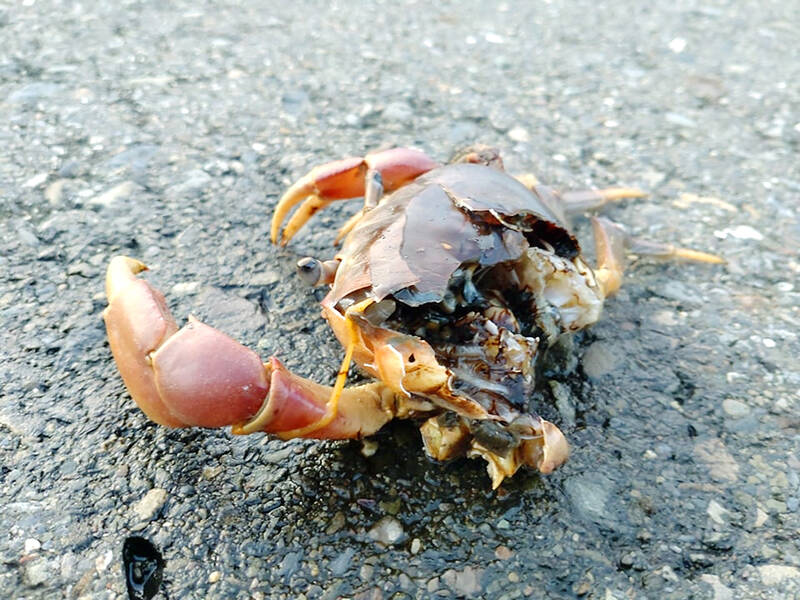
Photo: Tsai Tsung-hsien, Taipei Times
Certain crab species are also in danger, he adds. On Jun. 6 last year, the Liberty Times (the Chinese-language sister newspaper of the Taipei Times) reported that, while lane closures and asking drivers to slow down have reduced the number of terrestrial crabs killed by traffic within Kenting National Park during the June-October breeding season, a local environmentalist group had “recorded many tragic scenes of roadkill” outside the park.
Among nature lovers like Bill Murphy, roadkill is a major cause of dismay.
The American has come across scores of road-killed animals during his 15-plus of herping in Taiwan.
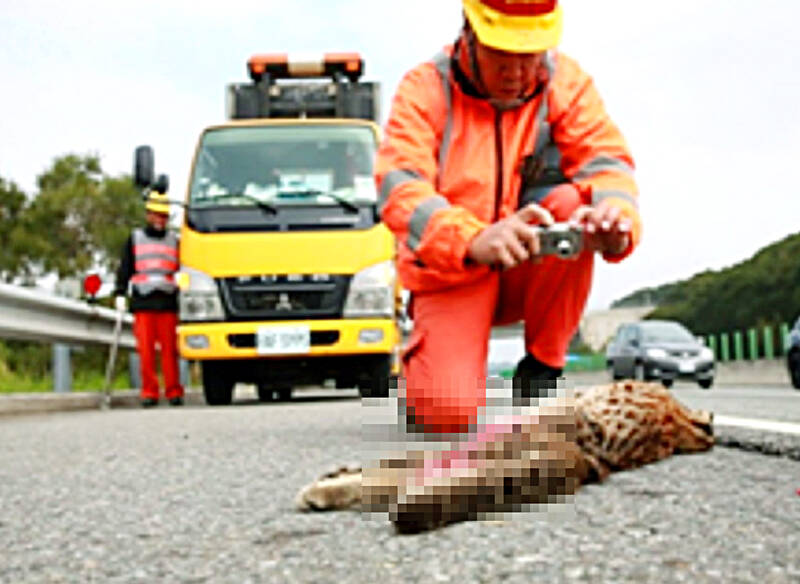
Photo courtesy of the Freeway Bureau
“Generally, I’m out looking for snakes, but I’ve seen many DORs [dead on road], including frogs, turtles, lizards, birds, monkeys, bats, civets, ferret badgers and deer. Worst of all is when you come across an endangered species, like a pangolin,” says Murphy, co-creator of the www.snakesoftaiwan.com Web site.
Snakes are particularly vulnerable to cars, and not just because many species are nocturnal, he says.
“They’re generally slow-moving, hard to see and stretched lengthwise across the road, making them a large, unwitting target,” says the American. They’re cold-blooded, so as temperatures rise in the spring, “you start to see more and more living snakes, and also more DORs.”
“It’s heart-breaking to spend so many hours up in the mountains trying to find and photograph a rare and exquisite species of snake, only to finally come across one that’s been flattened by a passing vehicle,” he laments.
COLLECTION AND MITIGATION
TaiRON participants are encouraged to send roadkill specimens to ESRI’s labs so they can be studied. More than 10,000 animal corpses have been collected, and these remains play a key role in the government’s efforts to monitor rabies within the country.
Lin says that analysis of several years’ worth of data has enabled TaiRON to come up with a list of 138 roadkill hotspots.
“We’ve subsequently worked with relevant government agencies, such as national parks, the Forestry Bureau and the Directorate General of Highways, to install warning signs, protective fences and underground passages, and to make other improvements,” he says.
The findings have also been shared with car and tech companies. Some vehicle satnav systems and apps which help road-users avoid traffic jams now alert drivers when they’re approaching a hotspot.
To mitigate the problems of roadkill and habitat fragmentation, the authorities have modified a few of the bridges which go over freeways.
At Tongsiao (通霄) in Miaoli County, part of one bridge was turned into a 100m-long, 2.5m-wide ecological corridor comprising soil, rocks and native foliage. According to an Aug. 28, 2018 Liberty Times report, infrared cameras detected 656 animals using the corridor in its first few months. Among them were Formosan hares, leopard cats, masked palm civets and Chinese ferret-badgers.
Around the Guansi Interchange (關西交流) in Hsinchu County, the Freeway Bureau has put up netting to stop pangolins straying onto the Formosa Freeway (National Freeway No. 3).
In 2007, a 4m-high, 1.1km-long fence was erected along the inland side of the Formosa Freeway near Linnei (林內) in Yunlin County. It was designed to cut the number of casualties during the springtime purple crow butterfly migration by forcing the lepidopterans to fly higher as they go over the freeway. If the number of butterflies attempting to cross exceeds 250 per minute, one lane in each direction is closed to traffic, to give the insects a better chance of making it to the other side.
The Freeway Bureau’s Web site claims that, since it completed improvement works on more than 17 km of roadway, fatality rates of target species “have dropped significantly.” However, it provides no statistics.
As with many other environmental issues, education has to play a central role in efforts to curb roadkill.
Well-intentioned individuals who feed wild or stray animals should be made aware that oftentimes they’re increasing the risk of animal-vehicle collisions, by luring creatures to roadsides and distracting them. And Lin tells drivers that the best way to reduce the risk they’ll hit a wild animal is, “when driving on a country road at night, slowdown!”
Steven Crook, the author or co-author of four books about Taiwan, has been following environmental issues since he arrived in the country in 1991. He drives a hybrid and carries his own chopsticks. The views expressed here are his own.

April 14 to April 20 In March 1947, Sising Katadrepan urged the government to drop the “high mountain people” (高山族) designation for Indigenous Taiwanese and refer to them as “Taiwan people” (台灣族). He considered the term derogatory, arguing that it made them sound like animals. The Taiwan Provincial Government agreed to stop using the term, stating that Indigenous Taiwanese suffered all sorts of discrimination and oppression under the Japanese and were forced to live in the mountains as outsiders to society. Now, under the new regime, they would be seen as equals, thus they should be henceforth

Last week, the the National Immigration Agency (NIA) told the legislature that more than 10,000 naturalized Taiwanese citizens from the People’s Republic of China (PRC) risked having their citizenship revoked if they failed to provide proof that they had renounced their Chinese household registration within the next three months. Renunciation is required under the Act Governing Relations Between the People of the Taiwan Area and the Mainland Area (臺灣地區與大陸地區人民關係條例), as amended in 2004, though it was only a legal requirement after 2000. Prior to that, it had been only an administrative requirement since the Nationality Act (國籍法) was established in

With over 80 works on display, this is Louise Bourgeois’ first solo show in Taiwan. Visitors are invited to traverse her world of love and hate, vengeance and acceptance, trauma and reconciliation. Dominating the entrance, the nine-foot-tall Crouching Spider (2003) greets visitors. The creature looms behind the glass facade, symbolic protector and gatekeeper to the intimate journey ahead. Bourgeois, best known for her giant spider sculptures, is one of the most influential artist of the twentieth century. Blending vulnerability and defiance through themes of sexuality, trauma and identity, her work reshaped the landscape of contemporary art with fearless honesty. “People are influenced by

Three big changes have transformed the landscape of Taiwan’s local patronage factions: Increasing Democratic Progressive Party (DPP) involvement, rising new factions and the Chinese Nationalist Party’s (KMT) significantly weakened control. GREEN FACTIONS It is said that “south of the Zhuoshui River (濁水溪), there is no blue-green divide,” meaning that from Yunlin County south there is no difference between KMT and DPP politicians. This is not always true, but there is more than a grain of truth to it. Traditionally, DPP factions are viewed as national entities, with their primary function to secure plum positions in the party and government. This is not unusual